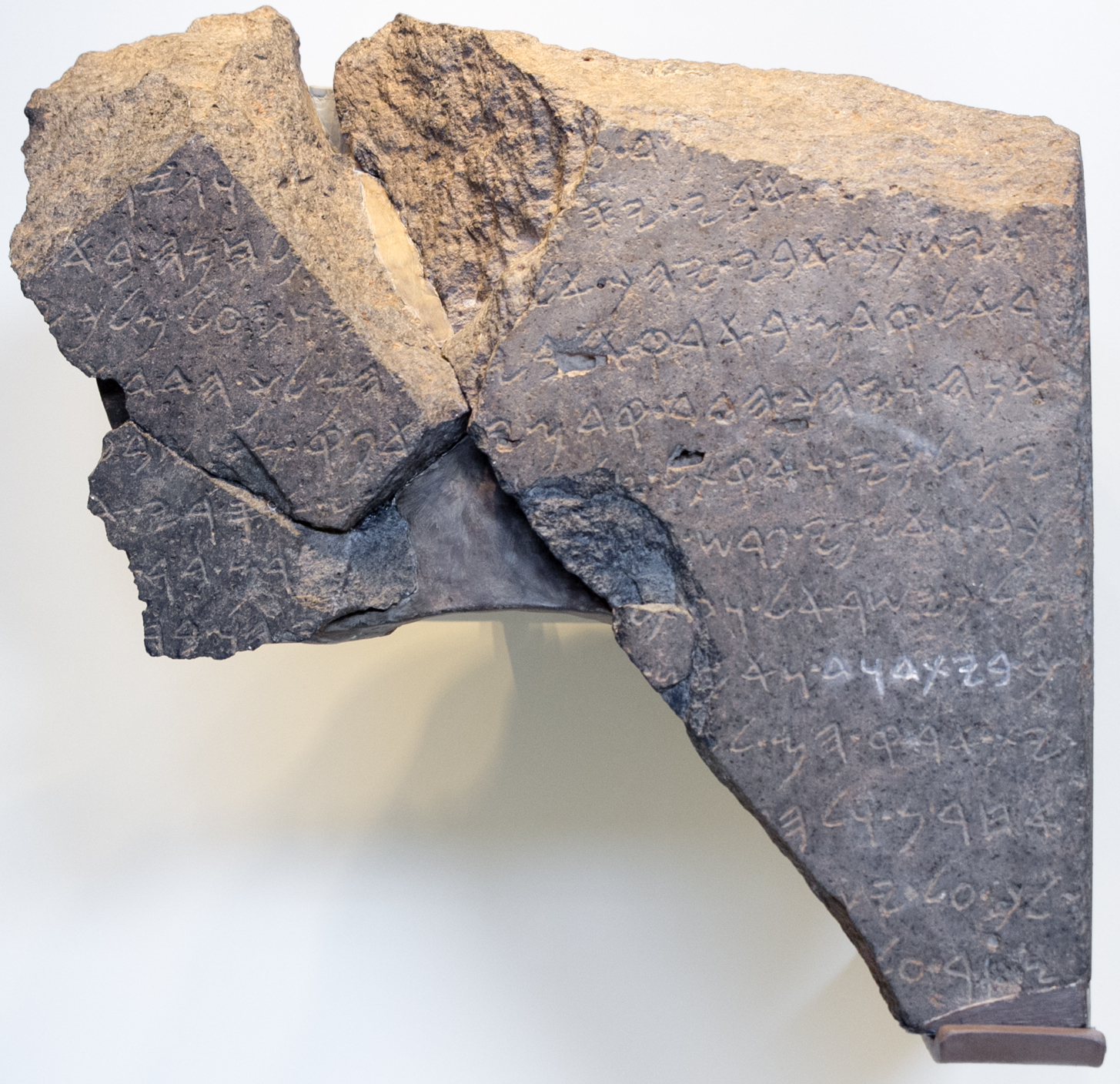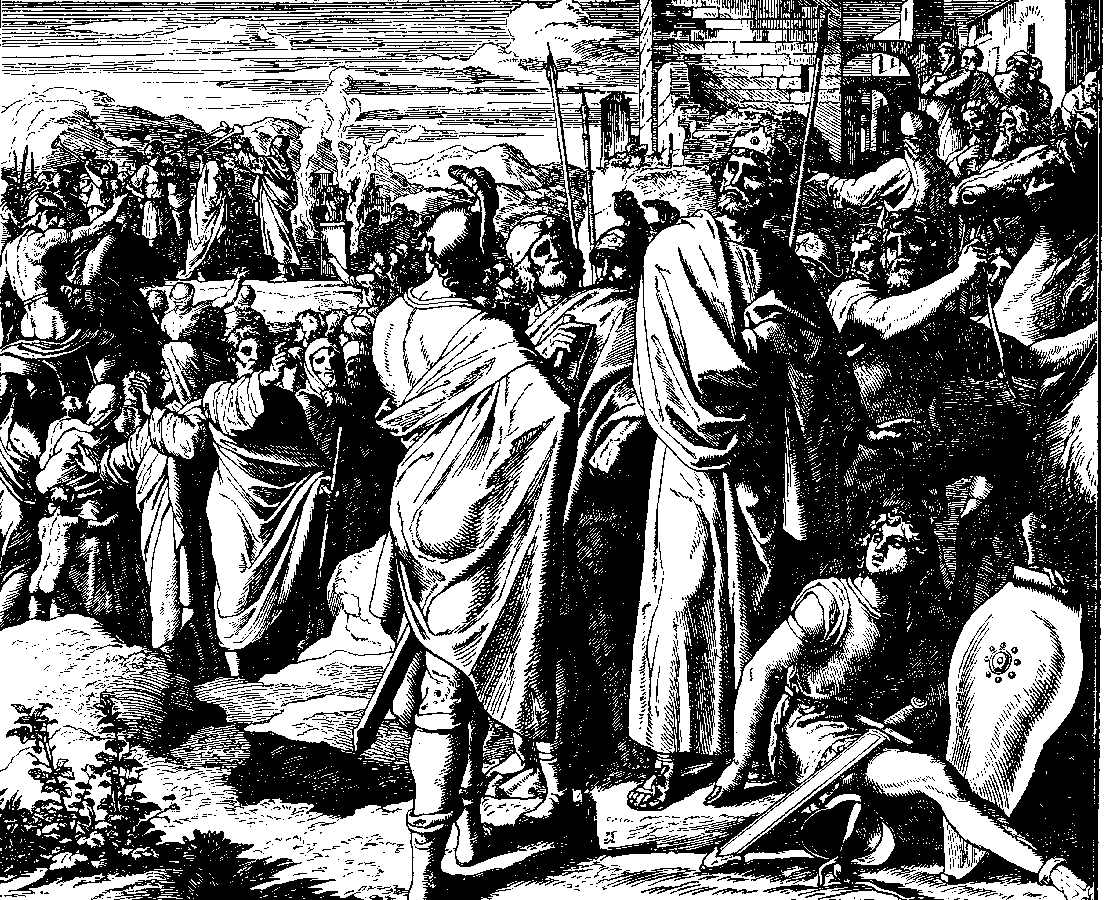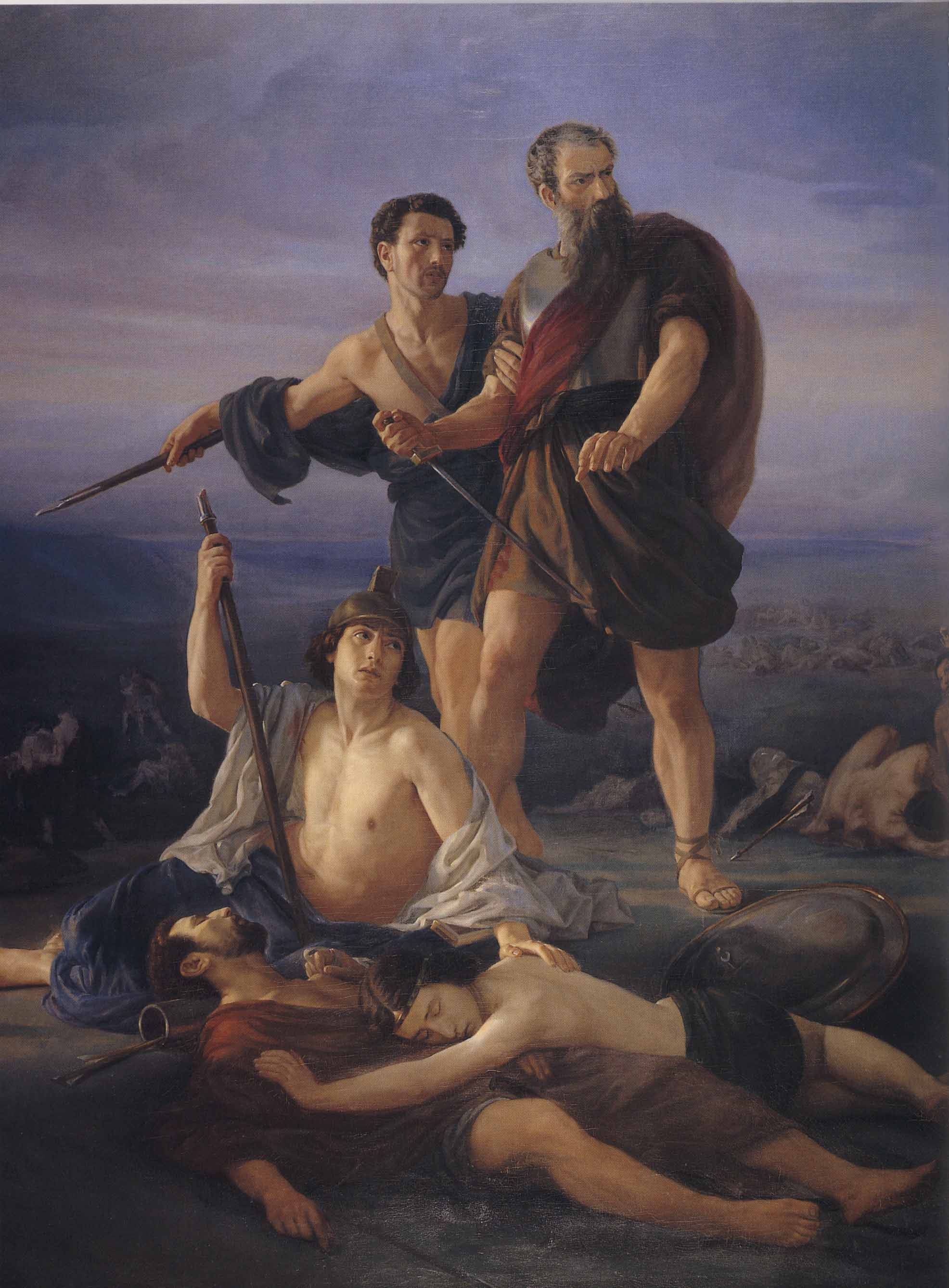|
Ein Gedi (archaeological Site)
The archaeological site at the Ein Gedi oasis was inhabited during different periods, and the earliest activity dates to the Chalcolithic period. Ein Gedi () is frequently mentioned in the Bible, in the works of Josephus, in rabbinic literature, and in early Christians, Christian sources. It was an important Jews, Jewish settlement on the western shore of the Dead Sea in ancient times. The ruins, including a 6th-century synagogue, testify to a continuous Jews, Jewish settlement in the area between the 5th century BCE to the 7th century CE. History and archaeology There was a Chalcolithic temple of Ein Gedi, temple at Ein Gedi during the Chalcolithic period. Though there is no evidence of Bronze Age settlement at Ein Gedi, Iron Age remains have been discovered at the site dating to the 7th century BCE. Ein Gedi is first mentioned in the Book of Joshua, the narrative of which takes place in the 7th century BCE. Later, the settlement is mentioned as the place where David fled from ... [...More Info...] [...Related Items...] OR: [Wikipedia] [Google] [Baidu] |
Israel
Israel (; he, יִשְׂרָאֵל, ; ar, إِسْرَائِيل, ), officially the State of Israel ( he, מְדִינַת יִשְׂרָאֵל, label=none, translit=Medīnat Yīsrāʾēl; ), is a country in Western Asia. It is situated on the Eastern Mediterranean, southeastern shore of the Mediterranean Sea and the northern shore of the Red Sea, and Borders of Israel, shares borders with Lebanon to the north, Syria to the northeast, Jordan to the east, and Egypt to the southwest. Israel also is bordered by the Palestinian territories of the West Bank and the Gaza Strip to the east and west, respectively. Tel Aviv is the Economy of Israel, economic and Science and technology in Israel, technological center of the country, while its seat of government is in its proclaimed capital of Jerusalem, although Status of Jerusalem, Israeli sovereignty over East Jerusalem is unrecognized internationally. The land held by present-day Israel witnessed some of the earliest human occup ... [...More Info...] [...Related Items...] OR: [Wikipedia] [Google] [Baidu] |
Eusebius
Eusebius of Caesarea (; grc-gre, Εὐσέβιος ; 260/265 – 30 May 339), also known as Eusebius Pamphilus (from the grc-gre, Εὐσέβιος τοῦ Παμφίλου), was a Greek historian of Christianity, exegete, and Christian polemicist. In about AD 314 he became the bishop of Caesarea Maritima in the Roman province of Syria Palaestina. Together with Pamphilus, he was a scholar of the biblical canon and is regarded as one of the most learned Christians during late antiquity. He wrote ''Demonstrations of the Gospel'', '' Preparations for the Gospel'' and ''On Discrepancies between the Gospels'', studies of the biblical text. As "Father of Church History" (not to be confused with the title of Church Father), he produced the '' Ecclesiastical History'', ''On the Life of Pamphilus'', the ''Chronicle'' and ''On the Martyrs''. He also produced a biographical work on Constantine the Great, the first Christian Roman emperor, who was ''augustus'' between AD ... [...More Info...] [...Related Items...] OR: [Wikipedia] [Google] [Baidu] |
Bar Kokhba Revolt
The Bar Kokhba revolt ( he, , links=yes, ''Mereḏ Bar Kōḵḇāʾ''), or the 'Jewish Expedition' as the Romans named it ( la, Expeditio Judaica), was a rebellion by the Jews of the Judea (Roman province), Roman province of Judea, led by Simon bar Kokhba, against the Roman Empire. Fought Common Era, CE, it was the last of three major Jewish–Roman wars, so it is also known as the Third Jewish–Roman War or, the Third Jewish Revolt. Some historians also refer to it as the Second Revolt of Judea, not counting the Kitos War (115–117 CE), which had only marginally been fought in Judea. The revolt erupted as a result of religious and political tensions in Judea following on the failed First Jewish–Roman War, First Revolt in 66–73 CE. These tensions were related to the establishment of a large Roman military presence in Judea, changes in administrative life and the economy, together with the outbreak and suppression of Jewish revolts from Mesopotamia to Ancient Libya, ... [...More Info...] [...Related Items...] OR: [Wikipedia] [Google] [Baidu] |
Sicarii
The Sicarii (Modern Hebrew: סיקריים ''siqariyim'') were a splinter group of the Jewish Zealots who, in the decades preceding Jerusalem's destruction in 70 CE, strongly opposed the Roman occupation of Judea and attempted to expel them and their sympathizers from the area. The Sicarii carried '' sicae'', or small daggers, concealed in their cloaks. At public gatherings, they pulled out these daggers to attack Romans and alleged Roman sympathizers alike, blending into the crowd after the deed to escape detection. The Sicarii are regarded as one of the earliest known organized assassination units of cloak and daggers, predating the Islamic Hashishin and Japanese ninja by centuries.Pichtel, John, ''Terrorism and WMDs: Awareness and Response'', CRC Press (April 25, 2011) p.3-4. Ross, Jeffrey Ian, ''Religion and Violence: An Encyclopedia of Faith and Conflict from Antiquity to the Present'', Routledge (January 15, 2011), Chapter: Sicarii. The derived Spanish term ''sicario'' ... [...More Info...] [...Related Items...] OR: [Wikipedia] [Google] [Baidu] |
Thermae
In ancient Rome, (from Greek , "hot") and (from Greek ) were facilities for bathing. usually refers to the large Roman Empire, imperial public bath, bath complexes, while were smaller-scale facilities, public or private, that existed in great numbers throughout Rome. Most Roman cities had at least one – if not many – such buildings, which were centers not only for bathing, but socializing and reading as well. Bathhouses were also provided for wealthy private Roman villa, villas, domus, town houses, and castra, forts. They were supplied with water from an adjacent river or stream, or within cities by aqueduct (watercourse), aqueduct. The water would be heated by fire then channelled into the caldarium (hot bathing room). The design of baths is discussed by Vitruvius in ''De architectura'(V.10) Terminology '','' '','' '','' and may all be translated as 'bath' or 'baths', though Latin sources distinguish among these terms. or , derived from the Greek language, G ... [...More Info...] [...Related Items...] OR: [Wikipedia] [Google] [Baidu] |
Timeline Of Palestine Region
The timeline of the Palestine region is a timeline of major events in the history of Palestine. For more details on the history of Palestine see History of Palestine. In cases where the year or month is uncertain, it is marked with a slash, for example 636/7 and January/February. Mesozoic/Cenozoic geological eras * c. 65–70 million BCE – A '' Prognathodon'' dies in the Negev region; its complete skull was discovered in a phosphate mine in the Negev in 1993. Palaeolithic * 420–220 ka BP – archaic humans occupy the Qesem Cave. Epipalaeolithic *c. 9000 BCE – Natufian hunter-gatherer groups form a permanent settlement that would come to be known as Jericho. Neolithic Neolithic (8,500–4,500 BCE). (Snippet view). Chalcolithic (Copper Age) Chalcolithic (4,500–3,500 BCE). Bronze Age Early Bronze Age Early Bronze Age (3,500–2,350 BCE). Intermediate Bronze Age Intermediate Bronze Age (2,350–2000 BCE). Middle Bronze Age Middle Bronze Age (2000–1550 BCE) ... [...More Info...] [...Related Items...] OR: [Wikipedia] [Google] [Baidu] |
Kingdom Of Judah
The Kingdom of Judah ( he, , ''Yəhūdā''; akk, 𒅀𒌑𒁕𒀀𒀀 ''Ya'údâ'' 'ia-ú-da-a-a'' arc, 𐤁𐤉𐤕𐤃𐤅𐤃 ''Bēyt Dāwīḏ'', " House of David") was an Israelite kingdom of the Southern Levant during the Iron Age. Centered in Judea, the kingdom's capital was Jerusalem. The other Israelite polity, the Kingdom of Israel, lay to the north. Jews are named after Judah and are primarily descended from it. The Hebrew Bible depicts the Kingdom of Judah as a successor to the United Kingdom of Israel, a term denoting the united monarchy under biblical kings Saul, David and Solomon and covering the territory of Judah and Israel. However, during the 1980s, some biblical scholars began to argue that the archaeological evidence for an extensive kingdom before the late-8th century BCE is too weak, and that the methodology used to obtain the evidence is flawed. In the 10th and early 9th centuries BCE, the territory of Judah appears to have been sparsely populat ... [...More Info...] [...Related Items...] OR: [Wikipedia] [Google] [Baidu] |
Tell (archaeology)
In archaeology, a tell or tel (borrowed into English from ar, تَلّ, ', 'mound' or 'small hill'), is an artificial topographical feature, a species of mound consisting of the accumulated and stratified debris of a succession of consecutive settlements at the same site, the refuse of generations of people who built and inhabited them, and of natural sediment. (Very limited snippet view).Matthews (2020)Introduction and Definition/ref> Tells are most commonly associated with the ancient Near East, but they are also found elsewhere, such as Southern and parts of Central Europe, from Greece and Bulgaria to Hungary and SpainBlanco-González & Kienlin, eds (2020), 6th page of chapter 1, see map. and in North Africa. Within the Near East, they are concentrated in less arid regions, including Upper Mesopotamia, the Southern Levant, Anatolia and Iran, which had more continuous settlement. Eurasian tells date to the Neolithic,Blanco-González & Kienlin, eds (2020), 2nd page ... [...More Info...] [...Related Items...] OR: [Wikipedia] [Google] [Baidu] |
Books Of Chronicles
The Book of Chronicles ( he, דִּבְרֵי־הַיָּמִים ) is a book in the Hebrew Bible, found as two books (1–2 Chronicles) in the Christian Old Testament. Chronicles is the final book of the Hebrew Bible, concluding the third section of the Jewish Tanakh, the Ketuvim ("Writings"). It contains a genealogy starting with Adam and a history of ancient Judah and Israel up to the Edict of Cyrus in 539 BC. The book was divided into two books in the Septuagint and translated mid 3rd century BC. In Christian contexts Chronicles is referred to in the plural as the Books of Chronicles, after the Latin name given to the text by Jerome, but are also rarely referred to by their Greek name as the Books of Paralipomenon. In Christian Bibles, they usually follow the two Books of Kings and precede Ezra–Nehemiah, the last history-oriented book of the Protestant Old Testament. Summary The Chronicles narrative begins with Adam, Seth and Enosh, and the story is then carrie ... [...More Info...] [...Related Items...] OR: [Wikipedia] [Google] [Baidu] |
Saul
Saul (; he, , ; , ; ) was, according to the Hebrew Bible, the first monarch of the United Kingdom of Israel. His reign, traditionally placed in the late 11th century BCE, supposedly marked the transition of Israel and Judah from a scattered tribal society to organized statehood. The historicity of Saul and the United Kingdom of Israel is not universally accepted, as what is known of both comes from the Hebrew Bible. According to the text, he was anointed as king of the Israelites by Samuel, and reigned from Gibeah. Saul is said to have died by suicide when he "fell on his sword" during a battle with the Philistines at Mount Gilboa, in which three of his sons were also killed. The succession to his throne was contested between Ish-bosheth, his only surviving son, and David, his son-in-law; David ultimately prevailed and assumed kingship over Israel and Judah. Biblical account The biblical accounts of Saul's life are found in the Books of Samuel: House of King Saul Accordi ... [...More Info...] [...Related Items...] OR: [Wikipedia] [Google] [Baidu] |






